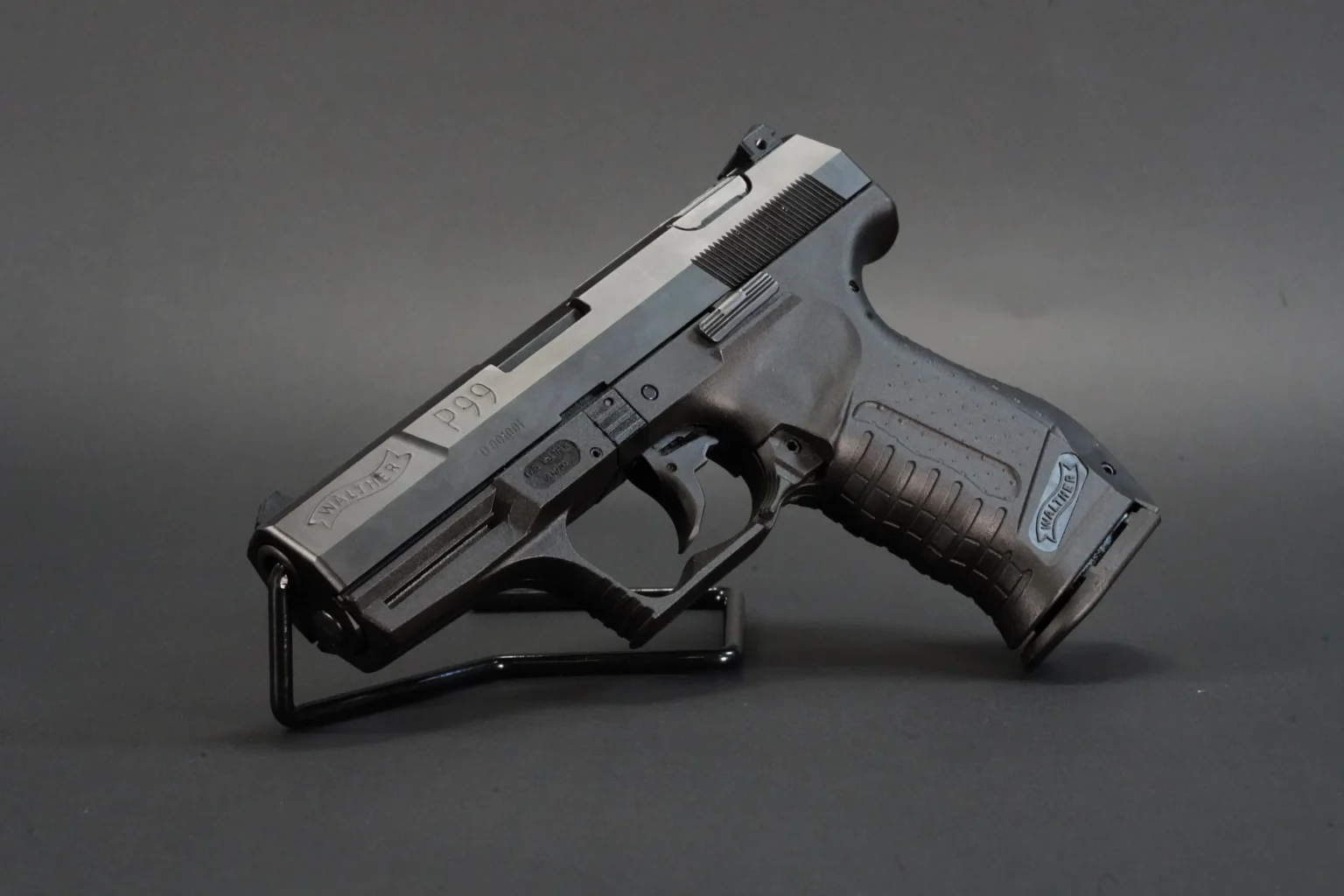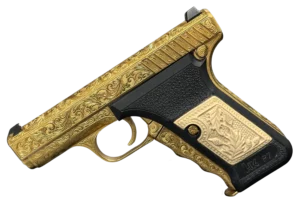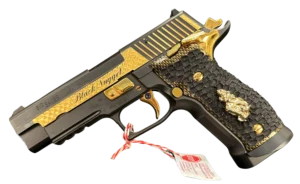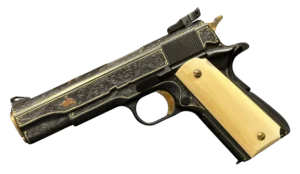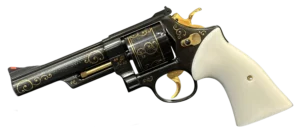Key Takeaways:
- The Walther P99 wasn’t just ahead of its time — it redefined what a modern handgun could be: From its modular grip to that brilliantly flexible trigger system, the P99 didn’t follow the crowd. It set the tone for what shooters began to expect from polymer pistols — comfort, adaptability, and innovation without the drama.
- Bond may have made it famous, but cops and real-world users made it matter: The P99 earned its place not just in Hollywood holsters, but in the duty belts of police forces worldwide. It balanced form and function with quiet confidence, and that’s why it remained in use for nearly three decades.
- The Final Edition isn’t just a marketing move — it’s a heartfelt sendoff: This isn’t about clearing inventory. It’s about closing a chapter with intention. The P99 AS Final Edition is Walther’s way of saying thanks to the gun, to the shooters who trusted it, and to the legacy it leaves behind.
Have you ever held a pistol and just felt like it gets you? That’s what the Walther P99 was for a lot of folks—shooters, collectors, even actors. And now, as production winds down with the Walther P99 AS Final Edition, we’re left with something that feels like the end of an era. It’s not just about a gun going out of production; it’s about a shift in mindset, a nod to where we came from, and a look at how far we’ve come.
Let’s talk about the P99—where it started, what made it matter, and why it’s still got a place in the collective memory of the gun world (and yeah, maybe the movie world too).
A Fresh Start for Walther (and the Birth of the P99)
Back in 1993, Walther wasn’t exactly riding high. The company, Carl Walther GmbH Sportwaffen, was struggling. Financial trouble, shifting markets, and the weight of legacy all came to a head. Enter Umarex, which swooped in, took control, and gave Walther a new lease on life. One of their first big moves? Develop a pistol that can keep pace with the changing times.
Glock was taking over the world. Heckler & Koch was dominating the tactical scene. And Walther? They needed something bold. Something different. The answer was the P99.
Launched in 1996, the P99 was Walther’s shot at reinvention. And it worked—big time.
What Made It Different?
Honestly, a better question might be: What didn’t it change?
The P99 came out swinging with a polymer frame—pretty standard now, but a gutsy move at the time. That alone made it lighter and more durable. But that wasn’t the headline.
No, the real buzz was the striker-fired mechanism. Remember, striker-fired guns weren’t new in the mid-90s, but Walther did something different with the trigger setup. They didn’t just go with one option. They gave you choices—three of them, actually:
- DAO (Double Action Only) for those who liked consistency.
- QA (Quick Action) for those seeking a more responsive experience.
- AS (Anti-Stress), the standout—offering a double-action pull for the first shot, then smooth single-action for the rest. Oh, and a little decocker button tucked neatly into the slide? Game-changer.
They weren’t just tweaking a trigger. They were rethinking the whole interaction between the shooter and the firearm.
And then there was the modular backstrap—a feature we take for granted now, but back then it was a notable innovation. Revolutionary. Being able actually to fit a pistol to your hand without major gunsmithing was a big deal.
Plus, you had a built-in Picatinny rail for lights and lasers. Not tacked on—built in. Walther was thinking ahead.
Bond. James Bond.
Okay, let’s not pretend this didn’t help: James Bond picked up the P99.
First in Tomorrow Never Dies, then again in Casino Royale. Pierce Brosnan gave it swagger. Daniel Craig gave it grit. Either way, the P99 looked right at home in a tuxedo or a tactical vest.
That kind of cinematic street cred matters. It’s part of why people still talk about the PPK decades later. And while the P99 may not have had the same old-school mystique, it had something arguably more valuable: relevance.
And it didn’t stop at Bond. The P99 popped up in everything from action thrillers to video games. When a character needed something sleek, modern, and just a little ahead of its time, the P99 got the call.
More Than a Pretty Face: Real-World Service
Of course, it wasn’t all Hollywood glitz. The P99 earned its stripes with real-world users as well.
Law enforcement agencies across the globe adopted it—Germany, Finland, and Malaysia. Special units like Ireland’s An Garda Síochána? They picked up the compact version, the P99C.
It wasn’t just about how it looked. It was about how it performed. Reliable. Comfortable. Intuitive. And that trigger system? It lets officers choose what works best for them, without sacrificing safety or consistency.
You’ve also got to appreciate the little things. The P99 didn’t just function—it fit people’s hands. It didn’t snag. It carried well. It was one of those pistols you could forget you were wearing until you needed it.
Digging Into the Details
Now for the gearheads—and let’s be honest, we’re all gearheads here at some level.
The P99 ran on a short-recoil, locked-breech system, borrowing from the tried-and-true Browning cam-lock design. It started in 9mm (of course), but also came in .40 S&W and 9x21mm IMI, depending on the market.
The frame was made of fiberglass-reinforced polymer, which is a fancy way of saying it was strong without being heavy. The slide was steel, housing a striker-fired system that kept the profile snag-free and the lines clean.
Sights? Phosphorescent three-dot irons—not quite night sights, but close enough to get you there.
Safety-wise, it had it all: trigger safety, striker block, drop safety, and the decocker we discussed earlier. It was safe to carry, draw, and use—even under pressure.
Variants, Tweaks, and Police Specials
As with any successful design, the P99 didn’t stay frozen in time. It evolved.
- Second gen (2004): Minor slide redesigns, small ergonomic improvements.
- Third gen (P99 AS): This one stuck. It refined everything people already liked, especially that Anti-Stress trigger.
- P99Q: A police-oriented variant built with feedback from law enforcement. A larger trigger guard, smoother pulls, and refined safety features.
- P99C: The compact model. Same DNA, more petite frame. Perfect for concealed carry or backup roles.
The beauty of all these variants? They stayed true to the original’s spirit—adaptable, intuitive, just plain smart.
The Final Curtain: P99 AS Final Edition
So here we are. After nearly three decades, Walther’s pulling the curtain closed.
The P99 AS Final Edition is more than a limited run—it’s a farewell note. Military green frame. Black slide. Collector’s box. Commemorative coin. It’s Walther tipping its hat to a pistol that did more than its fair share of heavy lifting.
And look, this wasn’t an easy decision. But times change. Preferences shift. Shooters today are looking for red-dot-ready slides, flat-faced triggers, and compatibility with optics. Guns like the PPQ and PDP check those boxes, and they’re easier (and cheaper) to manufacture with modern tooling.
The P99? It’s a little more old-school in its guts. And that’s part of the charm—but also part of the reason it’s being phased out.
So… What’s the Legacy?
This is the part where you usually get some grand summation, but let’s keep it real.
The P99 mattered.
It didn’t just follow trends—it started some of them. The modular grip. The configurable trigger system. The smart, streamlined polymer frame before that was the standard. Even the way it balanced form and function—it walked that line with confidence.
It never sold like Glocks. It never had the niche weirdness of something like a Steyr. But the P99? It had soul. It was a thinking shooter’s pistol. And it was comfortable being different.
When people look back at the late ’90s and early 2000s and ask what guns defined that era, the P99’s going to be on that list—right next to the USP, the Glock 17, and the Beretta 92.
And maybe, just maybe, one of those Final Editions ends up on your shelf. Or in your holster. Or in your safe next to a worn VHS of The World Is Not Enough.
Either way, the P99 lives on.
A Quiet Farewell to a Bold Design
It’s weird, saying goodbye to a piece of gear. It’s just steel and polymer, right? But if you’ve spent any time shooting one—especially the AS model—you know there’s something different about the P99.
It was never loud about what it did. It just… worked. Smoothly. Predictably. Elegantly, even.
And now, it’s stepping aside for the next generation.
But if you’ve ever owned one, carried one, or just admired it from a movie seat or gun shop counter, you get it.
The P99 wasn’t just another polymer pistol.
It was the one that taught us what a modern handgun could be.
Frequently Asked Questions
Honestly? A mix of things. Shooters’ tastes have shifted — people want red-dot-ready slides, flat triggers, and optics-friendly everything. Plus, newer models like the PPQ and PDP are just easier (and cheaper) to make with today’s tooling. The P99 had a good run, but it started showing its age, even if it still ran like a champ.
It’s not just another color scheme — it’s Walther tipping their hat to a classic. You get a military green frame, sleek black slide, a commemorative coin, and a special box. It’s more than a gun — it’s a sendoff—a little nostalgia wrapped in polymer and steel.
Totally. Just because it’s discontinued doesn’t mean it’s obsolete. If you don’t need a red dot or a Gucci flat trigger, the P99 still checks a lot of boxes: lightweight, ergonomic, and reliable as hell. Many people still carry them and swear by them.
It holds its own. Glocks are everywhere — they’re simple and they work. H&K brings that military-tough vibe. The P99? It’s the thinking shooter’s choice. More ergonomic than a Glock, more intuitive controls than most H&Ks, and a trigger system that gives you options. It’s not better or worse — just different. And for some folks, different is exactly what they want.
If you’re a collector, a Bond fan, or just someone who appreciates clever design, yeah — it’s worth it. These aren’t being made again, and Walther didn’t phone it in. It’s not just a pistol; it’s a piece of the brand’s story. And once they’re gone, that’s it.


